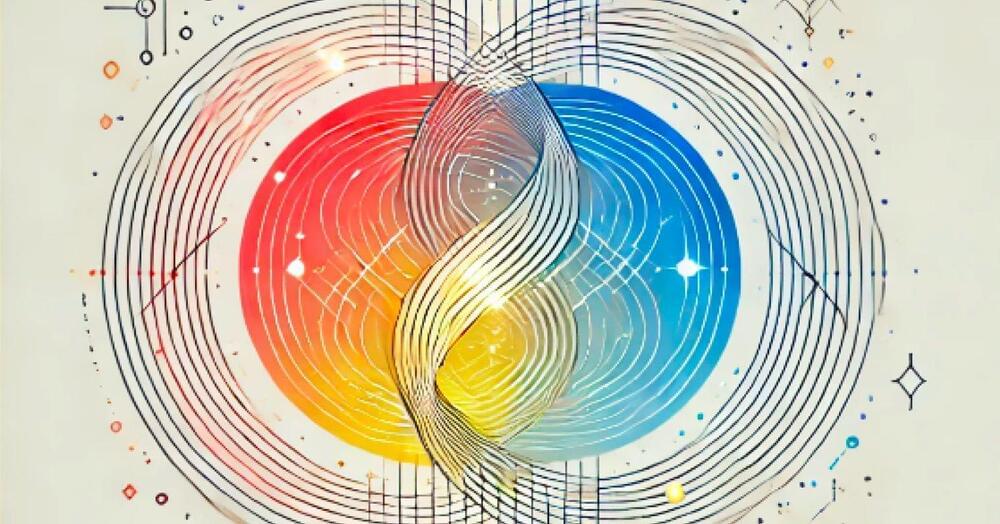AI’s language can intrigue, but mistaking its patterns for deeper wisdom blurs the line between thoughtful insight and mere digital mimicry.
In today’s fast-paced world, speed is celebrated. Instant messaging outpaces thoughtful letters, and rapid-fire tweets replace reflective essays. We’ve become conditioned to believe that faster is better. But what if the next great leap in artificial intelligence challenges that notion? What if slowing down is the key to making AI think more like us—and in doing so, accelerating progress?
OpenAI’s new o1 model, built on the transformative concept of the hidden Chain of Thought, offers an interesting glimpse into this future. Unlike traditional AI systems that rush to deliver answers by scanning data at breakneck speeds, o1 takes a more human-like approach. It generates internal chains of reasoning, mimicking the kind of reflective thought humans use when tackling complex problems. This evolution not only marks a shift in how AI operates but also brings us closer to understanding how our own brains work.
This concept of AI thinking more like humans is not just a technical accomplishment—it taps into fascinating ideas about how we experience reality. In his book The User Illusion, Tor Nørretranders reveals a startling truth about our consciousness: only a tiny fraction of the sensory input we receive reaches conscious awareness. He argues that our brains process vast amounts of information—up to a million times more than we are consciously aware of. Our minds act as functional filters, allowing only the most relevant information to “bubble up” into our conscious experience.
Barbosa, Stein et al. show that rather than operating independently, PFC persistent activity and ‘activity-silent’ mechanisms interact dynamically to produce serial effects in working memory, consistent with attractor models with synaptic plasticity.
One major reason why it has been difficult to develop an effective HIV vaccine is that the virus mutates very rapidly, allowing it to evade the antibody response generated by vaccines.
Several years ago, MIT researchers showed that administering a series of escalating doses of an HIV vaccine over two weeks could help overcome a part of that challenge by generating larger quantities of neutralizing antibodies.
However, a fast multidose vaccine regimen is not practical for mass vaccination campaigns.
Creating superhuman AI
Posted in alien life, mathematics, physics, robotics/AI
This conversation between Max Tegmark and Joel Hellermark was recorded in April 2024 at Max Tegmark’s MIT office. An edited version was premiered at Sana AI Summit on May 15 2024 in Stockholm, Sweden.
Max Tegmark is a professor doing AI and physics research at MIT as part of the Institute for Artificial Intelligence \& Fundamental Interactions and the Center for Brains, Minds, and Machines. He is also the president of the Future of Life Institute and the author of the New York Times bestselling books Life 3.0 and Our Mathematical Universe. Max’s unorthodox ideas have earned him the nickname “Mad Max.”
Joel Hellermark is the founder and CEO of Sana. An enterprising child, Joel taught himself to code in C at age 13 and founded his first company, a video recommendation technology, at 16. In 2021, Joel topped the Forbes 30 Under 30. This year, Sana was recognized on the Forbes AI 50 as one of the startups developing the most promising business use cases of artificial intelligence.
Timestamps.
Enjoy the videos and music you love, upload original content, and share it all with friends, family, and the world on YouTube.
While current treatments for ailments related to aging and diseases like type 2 diabetes, Alzheimer’s, and Parkinson’s focus on managing symptoms, Texas A&M researchers have taken a new approach to fight the battle at the source: recharging mitochondrial power through nanotechnology.
Led by Dr…
When we need to recharge, we might take a vacation or relax at the spa. But what if we could recharge at the cellular level, fighting against aging and disease with the microscopic building blocks that make up the human body?
When we need to recharge, we might take a vacation or relax at the spa. But what if we could recharge at the cellular level, fighting against aging and disease with the microscopic building blocks that make up the human body?
The ability to recharge cells diminishes as humans age or face diseases. Mitochondria, often called the powerhouse of the cell, are central to energy production. When mitochondrial function declines, it leads to fatigue, tissue degeneration, and accelerated aging. Activities that once required minimal recovery now take far longer, highlighting the role that these organelles play in maintaining vitality and overall health.
While current treatments for ailments related to aging and diseases like type 2 diabetes, Alzheimer’s, and Parkinson’s focus on managing symptoms, Texas A&M researchers have taken a new approach to fight the battle at the source: recharging mitochondrial power through nanotechnology.
In this episode of The Cognitive Revolution, Nathan interviews Samo Burja, founder of Bismarck Analysis, on the strategic dynamics of artificial intelligence through a geopolitical lens. They discuss AI’s trajectory, the chip supply chain, US-China relations, and the challenges of AI safety and militarization. Samo brings both geopolitical expertise and technological sophistication to these critical topics, offering insights on balancing innovation, security, and international cooperation.
Apply to join over 400 Founders and Execs in the Turpentine Network: https://www.turpentinenetwork.co/
RECOMMENDED PODCAST:
Live Players with Samo Burja.
The \
In this special crossover episode of The Cognitive Revolution, Nathan Labenz joins Robert Wright of the Nonzero newsletter and podcast to explore pressing questions about AI development. They discuss the nature of understanding in large language models, multimodal AI systems, reasoning capabilities, and the potential for AI to accelerate scientific discovery. The conversation also covers AI interpretability, ethics, open-sourcing models, and the implications of US-China relations on AI development.
Apply to join over 400 founders and execs in the Turpentine Network: https://hmplogxqz0y.typeform.com/to/J…
RECOMMENDED PODCAST: History 102
Every week, creator of WhatifAltHist Rudyard Lynch and Erik Torenberg cover a major topic in history in depth — in under an hour. This season will cover classical Greece, early America, the Vikings, medieval Islam, ancient China, the fall of the Roman Empire, and more. Subscribe on.
Spotify: https://open.spotify.com/show/36Kqo3B…
Apple: https://podcasts.apple.com/us/podcast…
YouTube: / @history102-qg5oj.
SPONSORS:









